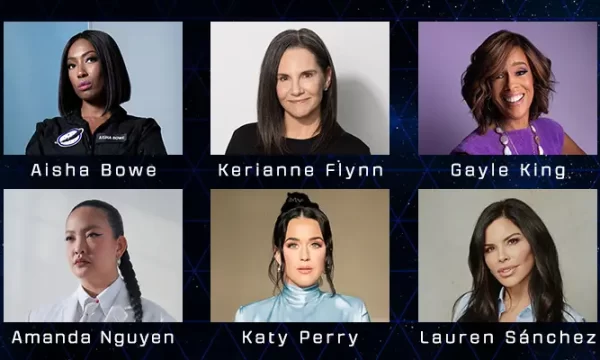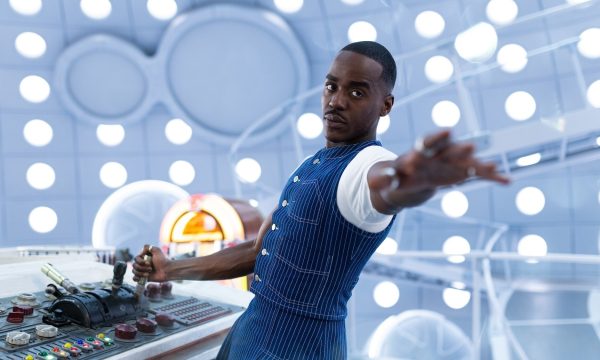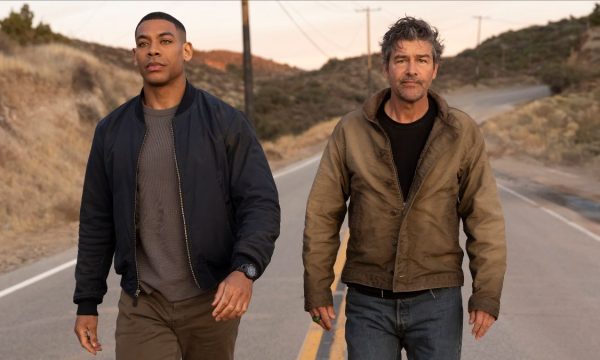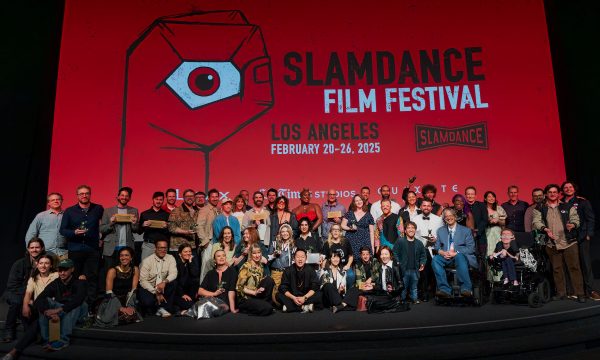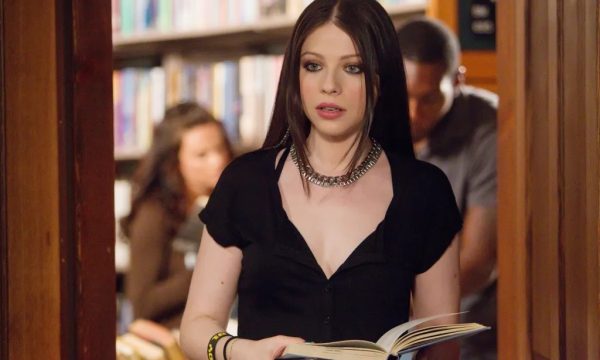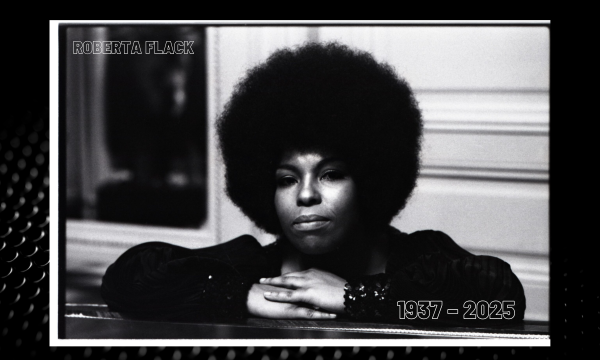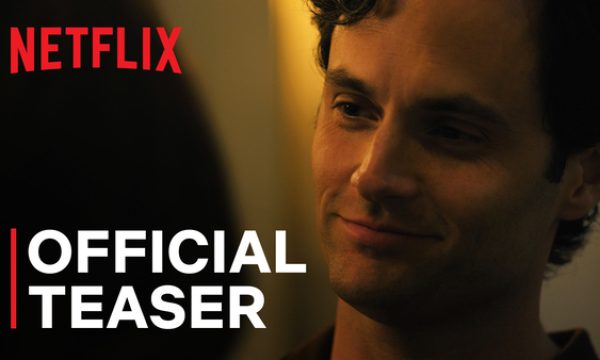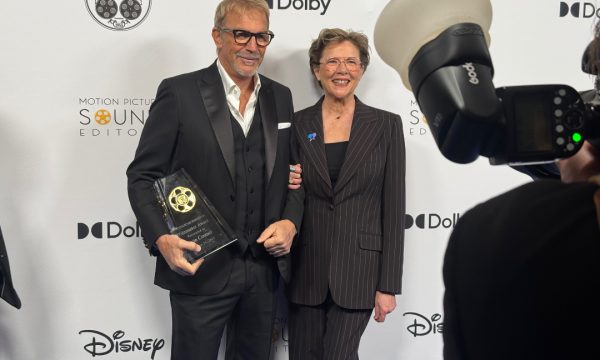 Tim Burton is known worldwide for his dark and bizarre film direction. Some find his style very strange, but still, people love his movies; from EDWARD SCISSORHANDS to BEETLEJUICE and SLEEPY HOLLOW, the list goes on. These films would not be as memorable as they are without Burton’s creative team. Together, they make his imagination a reality. Costume designer, Colleen Atwood is one of his most trusted collaborators. Over 20 years ago, he discovered Colleen’s talent and since then, they have worked on over 9 films together. Today, she is one of the most acclaimed and sought after costume designers in Hollywood. She began her career as a fashion advisor, but discovered her love for costume design working as a production assistant on RAGTIME. She then earned a name for herself designing for Sting’s 1985 “Bring on the Night World Tour.”
Tim Burton is known worldwide for his dark and bizarre film direction. Some find his style very strange, but still, people love his movies; from EDWARD SCISSORHANDS to BEETLEJUICE and SLEEPY HOLLOW, the list goes on. These films would not be as memorable as they are without Burton’s creative team. Together, they make his imagination a reality. Costume designer, Colleen Atwood is one of his most trusted collaborators. Over 20 years ago, he discovered Colleen’s talent and since then, they have worked on over 9 films together. Today, she is one of the most acclaimed and sought after costume designers in Hollywood. She began her career as a fashion advisor, but discovered her love for costume design working as a production assistant on RAGTIME. She then earned a name for herself designing for Sting’s 1985 “Bring on the Night World Tour.”
Almost 30 years later, she has worked on over 50 films and theater projects, with a number of A-list actors, including Tom Hanks in Philadelphia (1993), Mark Wahlberg in PLANET OF THE APES (2001), Tom Cruise in MISSION IMPOSSIBLE III (2006) and numerous Johnny Depp films such as SWEENEY TODD (2007), PUBLIC ENEMIES (2009), THE RUM DIARY (2011), etc. If that wasn’t impressive enough, Colleen has been nominated for 9 Academy Awards and won 3 for CHICAGO (2002), MEMOIRS OF A GEISHA (2006) and ALICE AND WONDERLAND (2010). Needless to say, Colleen has talent and is never without work. More recently, she designed for Burton’s DARK SHADOWS, which released on May 11th.
I had the pleasure of meeting Colleen while she was promoting her latest project, SNOW WHITE AND THE HUNTSMEN starring Charlize Theron, Chris Hemsworth and Kristen Stewart. I conducted my interview in a room surrounded by costumes from the film, sewn by Colleen herself. Her attention to detail is precise and impeccable. Colleen appeared to me as impressive as her costumes. She educated LATF on the world of costume design.
What kind of talent or skill do you need to become a costume designer, especially for films?
I think there are all kinds of ways to define talent, and there are certain personality types that suit costume design more than others. Having an overall background in all kinds of studies helps, rather than just studying about clothes. Basically, you are designing characters; you’re designing people on the street and fantasy people. If you can connect it with experiences that you’ve had, people that you’ve known in your life, or things that you’ve seen and done in your life, I think it makes you a better designer. It’s not just going to all of the right schools. I came into costume design from a totally different way than other people did. I always wanted to be an artist; I had a very artistic bent. I studied painting, I studied art, and then I worked in fashion and came into costume design that way.
 Would you say that there’s a difference between designing for the theater and film?
Would you say that there’s a difference between designing for the theater and film?
I think that there are some differences. I think people exaggerate the difference a little bit sometimes. The needs for a theater performance of what a costume has to do, how long it has to last, and aspects like that are very different. But I think the idea of what the costume is, is not that different other than the technical things. You’re creating a character with the actor for a performance, and it’s the same. The performance for theater may be for months and on a film it may be for two days, but the idea of what you’re creating is not that different.
What is the creative process working on a film? Where do you start in developing looks for each character?
First, I read the screenplay, meet with the director about what his vision of the film is, and then take that idea and go and start research. Nowadays, because the prep time in films doesn’t have this luxury, you have a month to research, and then you have a month to do sketches. You’re doing a budget, and you’re doing your design and concept work all at the same time. I begin with an assistant, a sketch artist—who probably starts about a week later, a research person, my costume supervisor, and an office PA. After about 2 or 3 weeks, I go in for a second meeting with concept and costume ideas in place, along with fabric swatches that I’ve gone out and gathered. Because for me, that’s part of my inspiration: what’s out there and what I can do with it. For SNOW WHITE, we had public library research from art books. The Beverly Hills public library was a great source. I go to different libraries around town, museum collections, and I do online research. You do all that at once, so you’re not just sketching one day.
Your costumes in SNOW WHITE have very intricate fabrics. Where do you usually find your materials?
I have a fabric store in Paris that I always go to that’s very old-fashioned, which there are fewer and fewer of. It’s always just kind of a superstitious place I go to, and I feel like I’ll always have one thing from there. Turkey is a fantastic source for materials for certain things. The downside of it is the paper work, because when you do a studio movie, you have to have receipts and paper work that they can understand, and the studios are owned by corporations. I have fabrics in SNOW WHITE that come from Kazakhstan, from all over Asia. It really is a melting pot. The silk there came on the Silk Road. Everywhere you go, you see wonderful pieces that just give you ideas for textiles, etc.
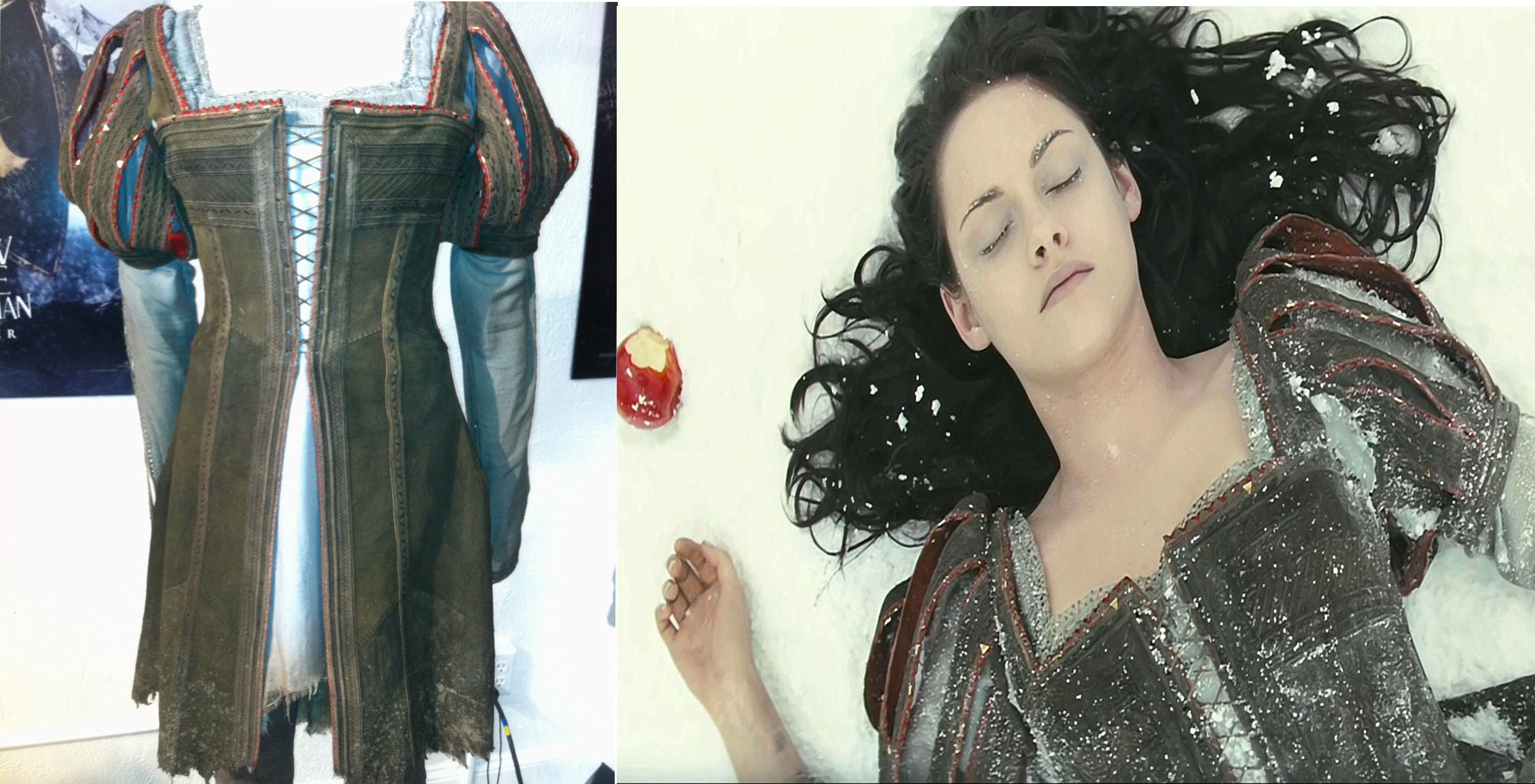 How closely does a costume designer work with the director?
How closely does a costume designer work with the director?
You initially work with the director, talking to them about how they see the movie and show them your design ideas, but it depends on the director. However, on a movie the scale of SNOW WHITE, the director has a lot of things going on, so you don’t go in there every day with a different idea. I tend to compress my meeting time with him into showing several things at once, getting it approved, moving ahead, and organizing it that way. I think it helps directors as a designer if you’re organized in what you present to them.
You and Tim Burton are longtime creative partners. How do you collaborate so well together?
I think that Tim and I have an aesthetic that’s kind of similar. We have things we share as far as what we find interesting and funny. Tim has a great sense of humor, which I really appreciate. And there’s just kind of an ease with him and I. We’ve been working together a long time, and I’m such a huge fan of him as an artist, what he brings to a job as an artist, and how he collaborates. Contrary to popular belief, Tim does not come in with a costume sketch of every costume, and say “This is what I want.” He does his little scribbles of characters and feelings that he likes, but when it comes to the costume, he totally wants to see what you’re doing and what the materials are.
You’ve worked with and designed for some incredible actors such as Brad Pitt, Johnny Depp, and Tom Hanks. What has that been like for you?
It’s great when you have that moment where they put on the costume, and it all comes together, and they feel it. And I think with each actor, the way they do it is different, but there is that moment where it just feels right, and a lot of it is more by feeling. The great actors I’ve worked with don’t look at it a lot, don’t spend a lot of mirror time. They’re more visceral with their costumes. They feel them; they use them and it’s a rewarding process.
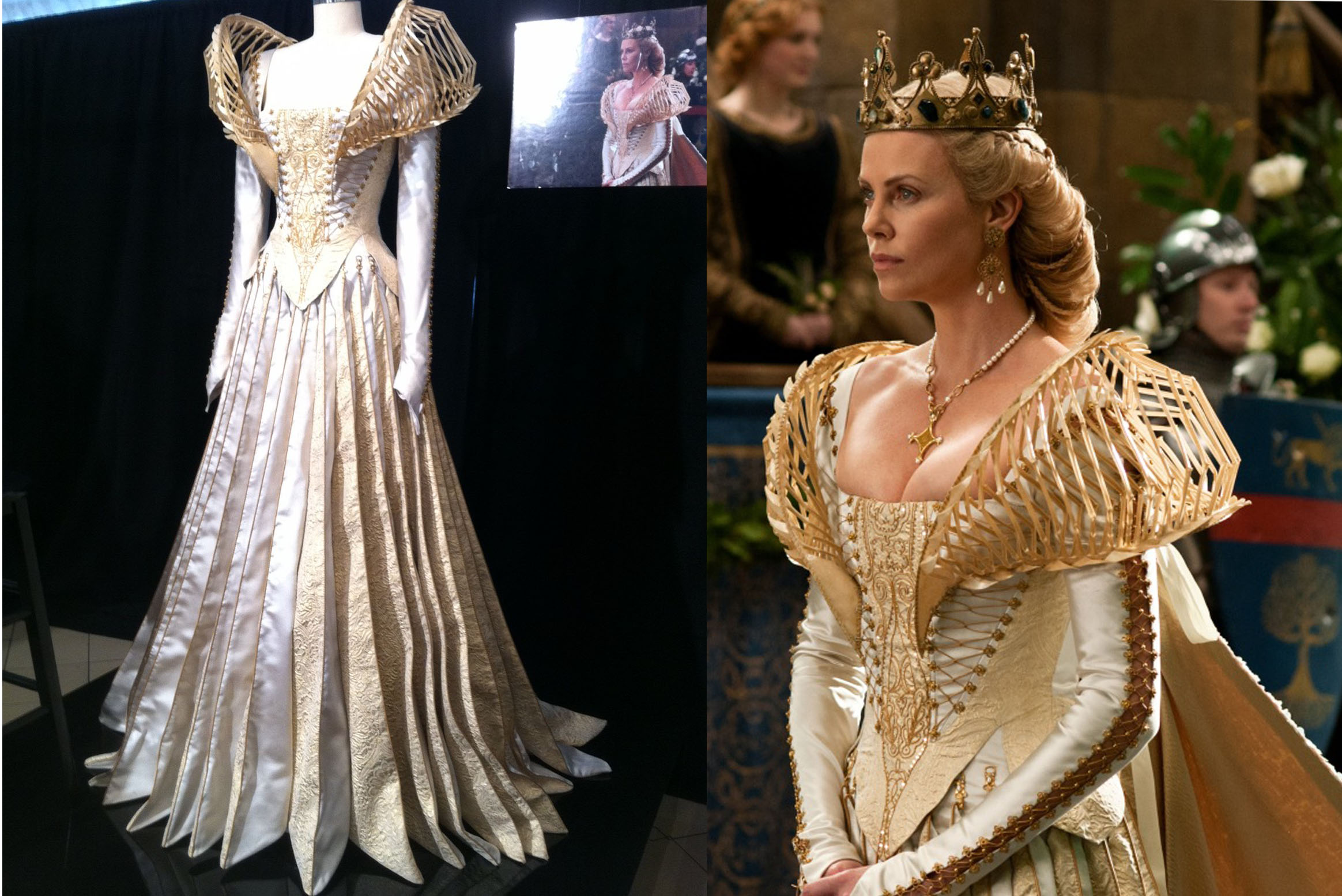 For those who are just getting into the business of costume design, what do you suggest as far as their education and training? Can you recommend any schools?
For those who are just getting into the business of costume design, what do you suggest as far as their education and training? Can you recommend any schools?
I think there are a lot of good design teachers out there and schools, but I think that studying for design and actually doing design are two different things. Anywhere where they can get any sort of practical work, whether it’s in a little children’s theater or anything like that, is good to enhance the studying of design. Having a good basis in history and literature are also good. Here in L.A., I’m a big supporter of the Fashion Institute downtown because it’s a working person’s kind of school. I’m less familiar with the university programs here, but I have gone to different schools, and seen what their designers are doing. I can’t stress enough that actually doing the work is the most important aspect of it. You can talk about it all you want, but until you’re actually doing it, it doesn’t mean anything.
Do you have a favorite film you’ve designed for?
I’ve gotten to do so many great ones, with so many great people, and there have been different journeys. The blanket statement is, ‘you learn new things on every movie, no matter what.’ You go to places you never think you’re going to go, and have no idea that you’ll ever go to in your life, and that’s the great reward.
Do you have any words of wisdom for those who aspire to design?
Any job that you can do in a production, or anything that relates to film, is worth doing, just because you learn something from everything.
In other news, you have a collection with the Home Shopping Network. What can you tell us about that?
Yes, it’s a very compressed collection. It has a few pieces inspired from SNOW WHITE. They’re kind of like the modern, functional version of Snow White’s costumes. They’re not the Charlize (Theron) costumes. They’re more the sporty version of Snow White. But when I was doing the movie, I thought “Oh, these are great shapes for contemporary things, and some of the details are wonderful.” And the Home Shopping Network has a certain price point, so it doesn’t quite embrace the detail work that the film does, but some of the shapes are reflected in the collection. It’s an everyman’s collection.
Colleen’s HSN collection launched at the end of May. You can see her latest costume creations in SNOW WHITE AND THE HUNTSMAN in theaters everywhere on June 1st.
www.snowwhiteandthehuntsman.com
www.imdb.com/name/nm0041181
http://www.hsn.com




